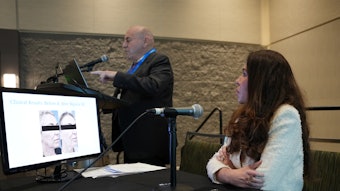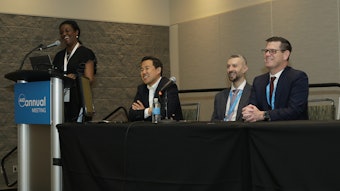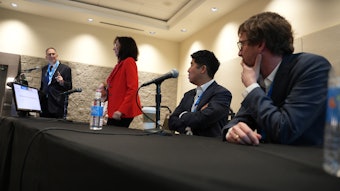Fear not the nails!
New session breaks down nail surgeries to help put dermatologists — and patients — more at ease.

For both the dermatologist and the patient, surgical procedures on nail pathologies can be as nerve-wracking as, well, nails on a chalkboard. But the reality is that many of these procedures can be managed in a general dermatology setting and, with proper preparation, they can go smoothly for both patient and physician.
One of the first steps toward treating nail problems is accurate diagnosis. In Friday’s new session, F011 – Nail Surgery: The Small Procedures to the Nail Apparatus That Frighten You, session director Nathaniel Jellinek, MD, FAAD, FACMS, said the tangential shave technique boasts numerous advantages.
“It provides a full excisional specimen for histopathologic analysis and cure,” Dr. Jellinek said. “It leaves decreased fibrosis and scarring, resulting in less postoperative dystrophy and less fibrosis, which can facilitate any subsequent surgery.”
While this may sound daunting if you don’t have much experience in the area, it’s not much different than any other type of dermatologic surgery, said Dr. Jellinek, who is a Mohs surgeon and nail specialist at Dermatology Professionals, Inc., in Providence, Rhode Island.
Dermatologists use a scalpel or razor to remove a sample of the nail tissue for biopsy and evaluation. It is the most reliable diagnostic approach, he said, especially in cases such as longitudinal melanonychia, longitudinal erythronychia, and onychomatricoma.
“Generally, one can and should approach nail surgery and excisions in the same mindset as one would cutaneous surgery — with an emphasis on accurate and timely diagnosis while minimizing morbidity,” he said.
Julia Baltz, MD, FAAD, a dermatologist in East Greenwich, Rhode Island, said one of the first courses of treatment dermatologists need to consider is anesthesia.
“Nails can present with significant morbidity and even mortality when neglected,” she said. “Comfort with nail procedures starts with perfect anesthesia, something that all dermatologists can become proficient in with appropriate training and practice.”
Dr. Baltz shared a big tip when using anesthesia for nail procedures: distraction.
“In my clinic, we listen to music and talk with the patient to cultivate a calm atmosphere,” she said.
Once tension is eased and the patient is calm, she said medical considerations are equally important.
“We use cryogen spray and vibration devices to decrease the pain of injection,” Dr. Baltz said. “My anesthetic of choice is ropivacaine. It has a relatively rapid onset of action, a long duration of action, and a vasoconstrictive effect. Bleeding is minimal during the procedure and patients have extended pain control (from 8-12 hours) after they leave the clinic.”
Among the more common nail conditions dermatologists are likely to see are ingrown toenails and nails with transverse curvature. Nilton Gioia Di Chiacchio, MD, PhD, said one of the best procedures for treating these cases is a chemical matricectomy, which uses chemical treatments (such as phenol) to break down the lateral nail matrix horn allowing the nail to regrow properly.
“It provides us with a high cure rate and a low risk of postoperative complications,” said Dr. Di Chiacchio, who is a dermatologist at the Hospital do Servidor Público Municipal in São Paulo, Brazil. “It is also an easy technique for dermatologists to learn.”
Whether it’s this technique or a more involved surgery, Dr. Di Chiacchio said nail surgery can be a frightening experience for both children and adults. One of the keys to making it a more calm and relaxing time is pain management.
“The knowledge of pain management before, during, and after a nail surgery — along with the principles of wound care — will give us not only credibility in front of our patients but reduces postoperative complications and makes the healing time less stressful for patients,” he said.
Dr. Di Chiacchio said there are several techniques dermatologists can employ to make the surgical procedure a smooth one for their patients.
“Make sure to create a calm and relaxing atmosphere before nail surgery and avoid triggers that can cause pain. Make sure to ensure the correct anesthesia for each type of nail surgery and explain to the patient how to deal with the wound, depending on the type of surgery,” he said. “Remember to be available to your patient during the postoperative period.”











